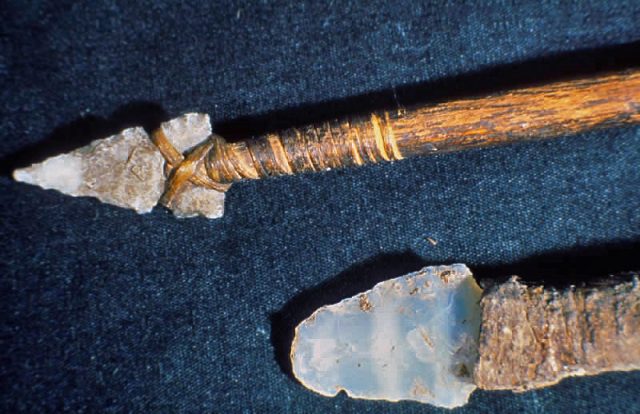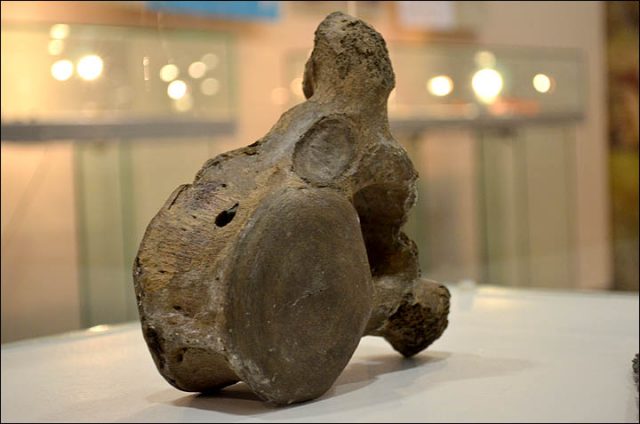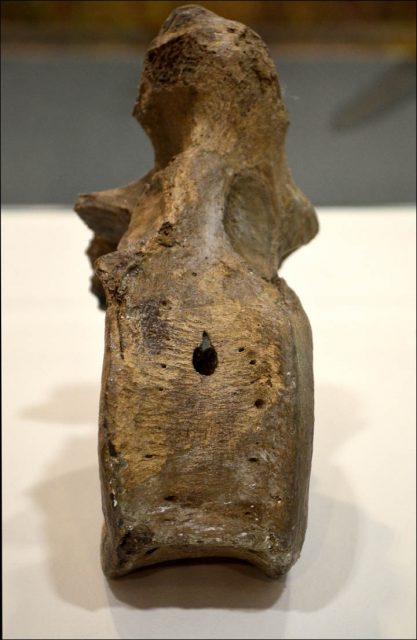45,000-year-old primitive weapons: Woolly mammoth with alleged spear wounds has been discovered
We re reading a lot about this in the news lately and the existence of woolly mammoths is something that people all over the world have always been fascinated by.
These were incredibly unique creatures and probably the first thing you think of when you hear ‘Ice Age’.
Lyuba – the female woolly mammoth calf who lived for just a month 40,000 years ago. She is the best preserved mammoth in the world #IceAge pic.twitter.com/A2tW1qUXBF
— The Ice Age (@Jamie_Woodward_) 1 November 2016
Because of the increased interest in these woolly mammoths, when Science journal earlier this year brought light to the fact that an ancient woolly mammoth with alleged spear wounds was discovered, it brought on heightened media interest all over the world. Even so, the pictures of the injuries on this woolly mammoth were not seen by any person outside academic circles. That is, until now.

These pictures, which have now been published by reputable news outlets, are conclusive proof of the fact that an ancient man did attack the woolly mammoth, which seems to have then been preserved in the permafrost. The implications of this discovery are amazingly significant. It would mean that there were actually human beings present in the frozen Arctic ten thousand years earlier than anyone had previously thought.
This discovery reminds us that Siberia is just shy of three thousand miles from what at that time was most likely a land bridge that connected modern Russia and Alaska. While this is still a significant amount of distance, it is certainly not an impossible distance for anyone to travel. This opens up the possibility that the Stone Age Siberians colonized the Americas as early as the discovery of this injured woolly mammoth.

The injured woolly mammoth was found to be a fifteen-year-old male that died on the eastern bank of the giant Yenisei River in northern Siberia. The remains of this injured woolly mammoth were found by an eleven-year-old child back in 2012. This is known as the Zhenya mammoth, which is named after the child that had found it and brought it to the attention to academics. It is also known as the Sopkarginsky mammoth, which stems from the location where it was discovered.
After this woolly mammoth was discovered, scientists began doing tests on it to find out more critical information. With a forensic analysis of the remains, scientists were able to find evidence that the woolly mammoth was hunted and killed by a man using primitive weapons and tools that were made of both bone and stone. The forensic analysis included still-preserved soft tissue, which was extremely helpful in gathering the information that has come to light about this ancient woolly mammoth. The leading scientist who was looking through the remains pointed out that, more likely than not, hunters threw relatively light spears.
This was a common hunting tactic, particularly among those hunting for elephants; something that is still used to this day in Africa. The scientists then went on to explain why this is the best strategy when hunting an animal of this size; when the animal is attacked with a large number of these needle-like weapons, the animal will start to lose blood, as often times even the light spear can penetrate deeply and cause injury to vital organs. This also causes the mobility of the animal to be incredibly limited which then leads to their inevitable demise writes the Siberian Times
Upon looking at the woolly mammoth and all the injuries that it did sustain, researchers pointed out that the most significant injury was caused to the left rib. It was caused by a slicing blow inflicted from the front and from above, going in a downward direction.

This blow was also strong enough to go through both the skin and muscles, which inevitably caused damage to the bone of the woolly mammoth. It also appears that there were other hits that were aimed to hit internal organs and blood vessels, but caused damage to the second right front rib. The mammoth was also attacked in the left scapula a minimum of three separate times; two of these injures were brought on by a weapon like the light throwing a spear.
Looking through the various injuries, it does appear that the woolly mammoth was attacked many, many times and in crucial areas where there would be very little chance of survival. Current day people who hunt elephants will understand the strategy that was used, as it’s a common technique to cut major arteries and cause intense bleeding. In the case of this woolly mammoth, though, it does appear the prehistoric men who attempted the hunt missed and struck a different bone instead of the intended target.
Many of the injuries that were found on the bones of the woolly mammoth also helped the scientists find some clues as to what the hunters did to the animal after they had killed it. The right tusk has traces of human interference on its tip; it appears they did not attempt to pull the entire tusk off but instead attempted to remove long slivers of ivory with the sharpest edges because they were very useful as butchering tools, Siberian Times reported.
This is an incredible prehistoric animal and its discovery can also give some insight as to how this animal coexisted with prehistoric humans at this time.





